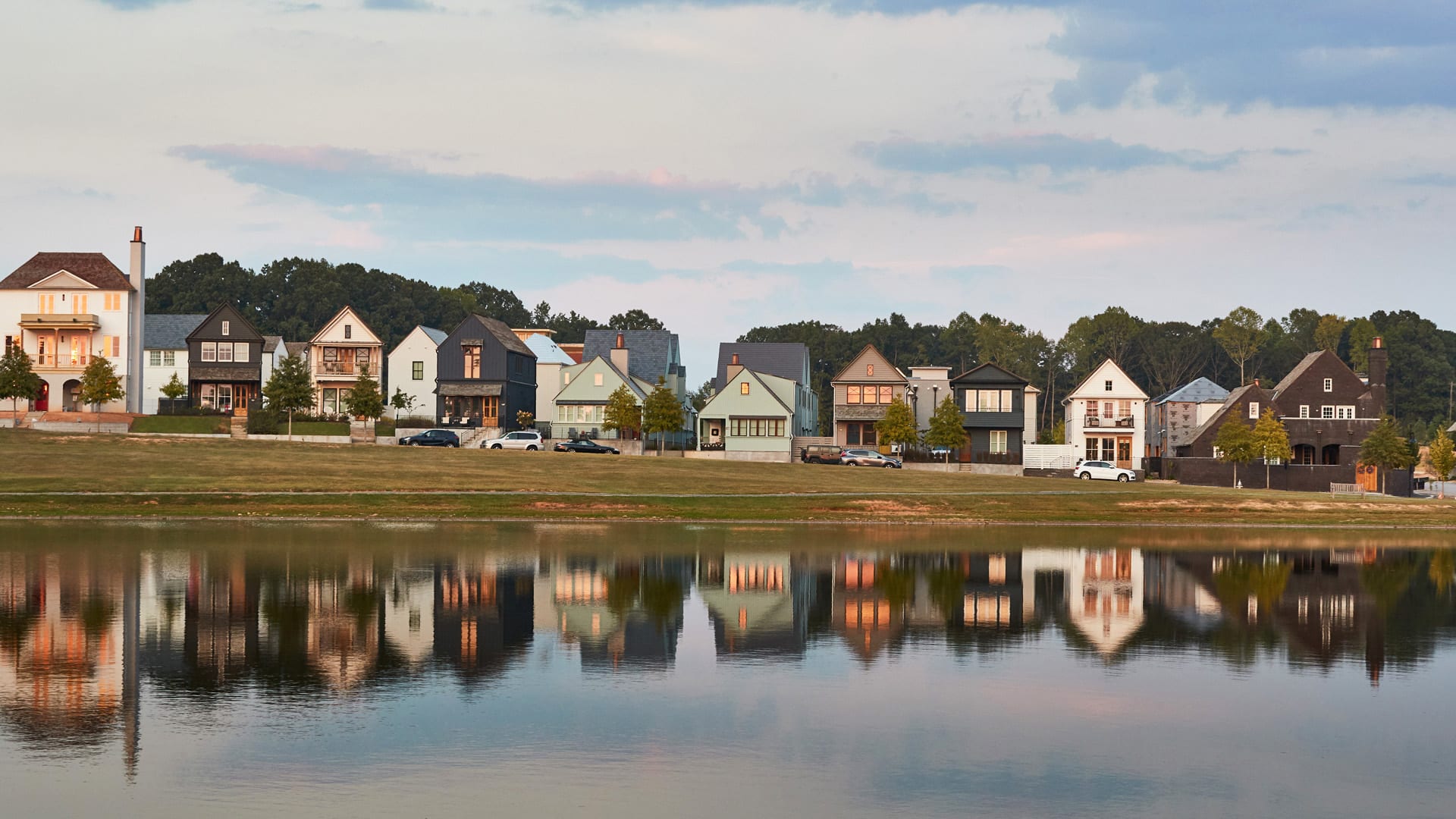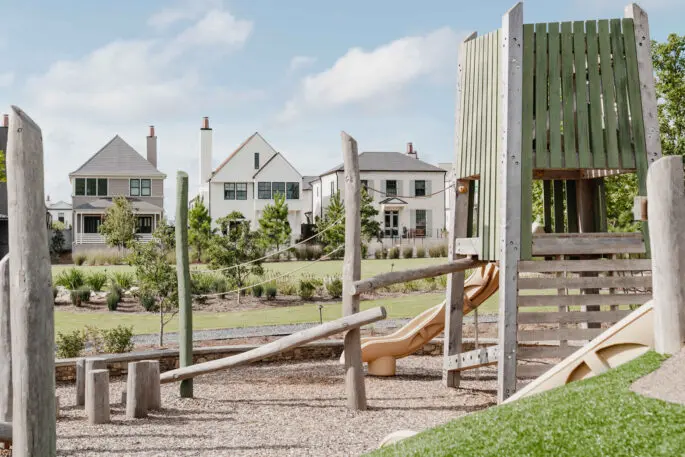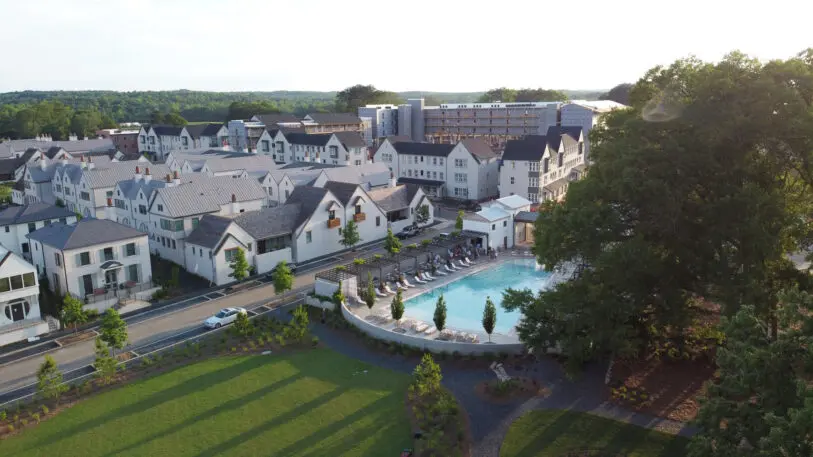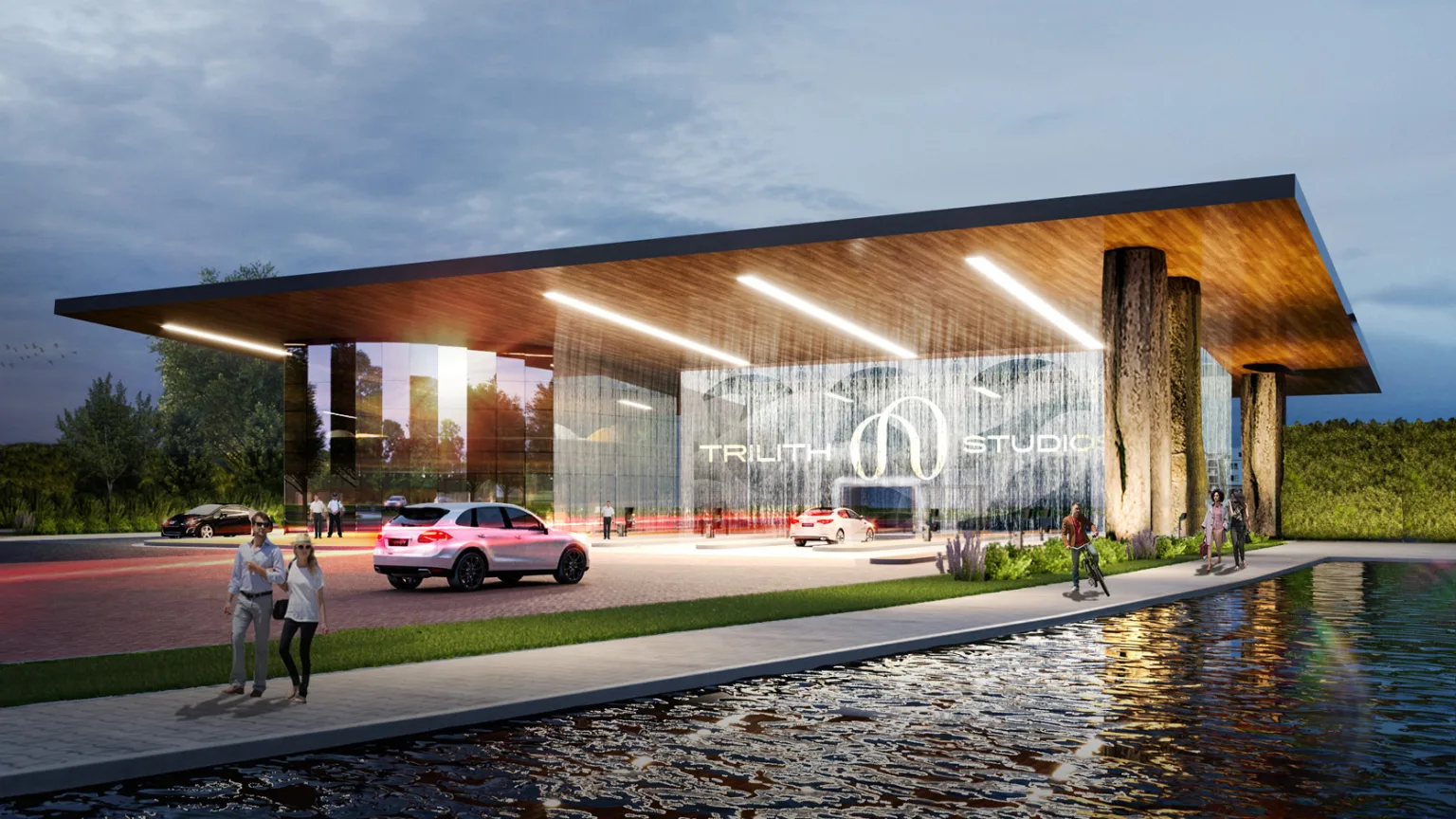FastCompany • October 12, 2020
When the British film studio company Pinewood opened a production facility outside Atlanta in 2014, it framed the venture as a one-stop-shop alternative to the mature but spatially fragmented system in Hollywood. With a high-tech media center, soundstages, offices, prop houses, and set builders all colocated, Pinewood Atlanta was a turnkey space for filming.
The strange story of the Southern town that Hollywood insiders are building from scratch
Trilith is a 235-acre town built within a massive film and TV production facility just outside of Atlanta.

BY Nate Berg
When the British film studio company Pinewood opened a production facility outside Atlanta in 2014, it framed the venture as a one-stop-shop alternative to the mature but spatially fragmented system in Hollywood. With a high-tech media center, soundstages, offices, prop houses, and set builders all colocated, Pinewood Atlanta was a turnkey space for filming. An early relationship with Marvel Studios led to a steady stream of big-budget superhero movies such as Ant Man and Captain America: Civil War, and Pinewood Atlanta quickly became a contender in the film business.
But some of its local investors wanted it to be more than just a production facility. They wanted the entire business to have a place at the studios, with development of new shows happening where they’d eventually be filmed, and local workers able to easily commute to jobs on the site, about 20 miles south of Atlanta. So they decided to build a town.

“Originally the idea of it was to do a mill town, a company town, which just meant get some housing here because people have got to live somewhere, and we want to make it convenient. And it grew into, if you’re going to build a town from scratch, what would you do?” says Rob Parker, president of what is now known as Trilith, a 235-acre town built within the 900-acre site of the studios.
Pinewood recently left the project, amiably, and the studio and town are now fully in the hands of local founders, who have accelerated Trilith’s development, which broke ground two years ago. Planned with New Urbanist design principles, Trilith is a dense, pedestrian-oriented, mixed-use village, with a commercial town center, more than half of its area dedicated to green space and forest, and room for an eventual population of 5,000. About 500 people are currently living in the town, which is planned to have a total of 1,400 townhomes, apartments, cohousing units, and 500-square-foot “microhomes.” Housing is available to rent or buy, and Trilith’s developers say it’s luring residents from within the film industry as well as people from other walks of life.

The studio side, now named Trilith Studios, is also being redeveloped, with new facilities geared toward more parts of the business, such as development offices and space for tech companies. These spaces are intended to bring in new types of companies in addition to the 60 vendors already providing production and ancillary services to productions on-site. The town side feeds into this ecosystem, creating the kind of place where people can work on months-long productions or years-long TV series without feeling like they’re living out of a suitcase.
“Instead of just being a soundstage facility that you haul people to when you’re ready to shoot, it can be a place where the development team can live and work, or have a second home at,” says Frank Patterson, president and CEO of Trilith Studios. “In some cases we have producers and production managers and coordinators that are now just living here because there’s so many shows coming.”

Parker says the town was inspired by Seaside, a New Urbanist community in Florida famous for its use as the setting of The Truman Show. Trilith was designed by the Atlanta-based planning firm Lew Oliver, with homes designed and built by companies such as 1023 Construction and Brightwater Homes. Parker says the design was intended to appeal to young creatives, with an emphasis on wellness and access to the outdoors, but with the kinds of amenities people want in a town. The first of the town’s restaurants recently opened, and 11 more are in the works. A 60,000-square-foot fitness studio was recently completed, and a K-12 school is already open.
“We’re not talking about some kind of fantasy nirvana,” says Parker, noting that residents include firefighters, schoolteachers, and pilots working out of nearby Hartsfield-Jackson Atlanta International Airport, as well as film industry professionals. “We’re talking about a real town, with the grit of a real town, the authenticity of a real town, all different housing types, all the way down to making sure all of your teams can afford to live here.”
How diverse the town ends up being remains to be seen as more of its homes and commercial properties come online. For now, it’s undeniably centered around film and TV production. Patterson, who’s worked in film since living in Hollywood in the 1980s, says Trilith is hoping to create a new kind of ecosystem for creative people to both work and live in, an industry town that’s as much about the town as it is about the industry.
“I know a lot of industries work this way, but it’s particular to the film industry that we like to make stuff together, we like to hang out together, we like to drink together, we like to raise our families together,” he says. “It just wouldn’t exist without the town.”

